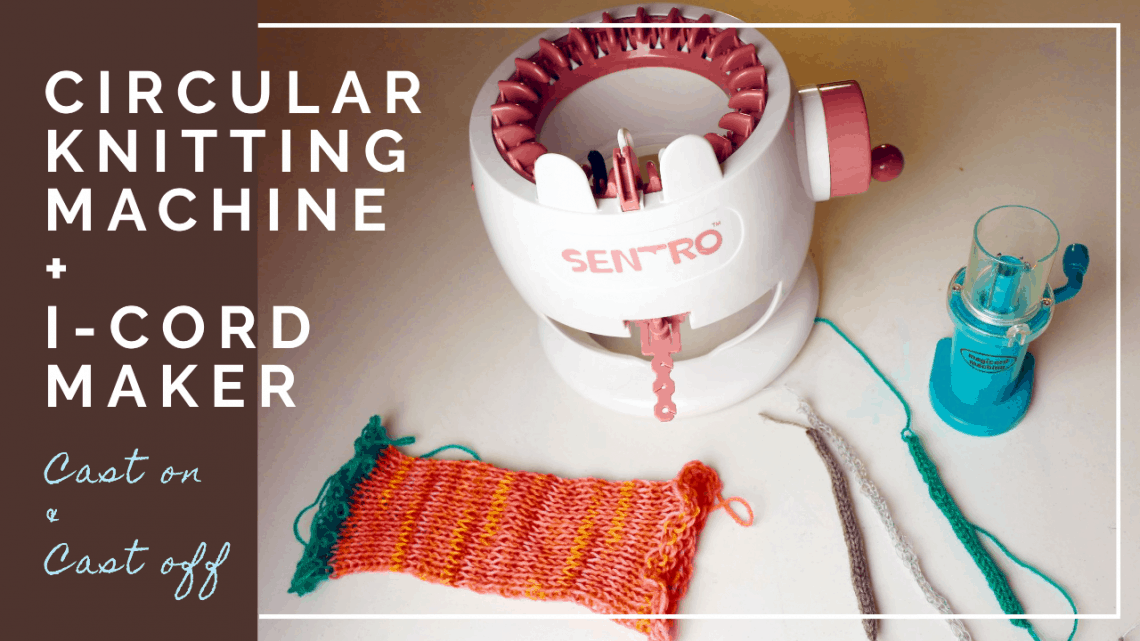
Circular knitting machine (Sentro) and I-cord maker cast on and cast off
There are many different circular knitting machines and I-cord makers you can buy today. I always wonder if they knit well so I bought a cheap Sentro brand 22 needle circular knitting machine. The I-cord maker is from a second-hand store. I don’t think the company (Bond) sells them anymore but many similar products are available online or at craft stores.
These are advertised as kid’s toys and hobby machines. They are made of plastic so the construction is a little flimsy. If you are looking for a high-quality circular knitting machine, check out the Addi brand and avoid all the Chinese machines. They will be much more expensive so it is your choice.
Circular knitting machine limitation
These plastic machines need gentle handling or they can break easily. But when they work, they work well and can knit up very quickly.
The limit of these machines is similar to all knitting machines. The size of the needle and the distance between needles will decide the final fabric. If you want to make an adult hat, the machine is different from a kid’s hat. And the machine to handle the worsted or bulky yarn will be different from the machine for lace or sock yarn. If you know one machine can produce the project you have in mind, then it is a useful tool for you. It is not much you can adjust about the gauge or tension. I was hoping the small size circular machine can knit socks but the tension is not right and the fabric is too loose.
Watch our video about the cast on and cast off tutorial
I-cord maker cast on and cast off
This is the I-cord machine I got from a thrift store. It comes with a VHS tape, 2 booklets, 1 needle, 2 weighted clips, and a ball of green yarn.


Different projects you can make with an I-cord.
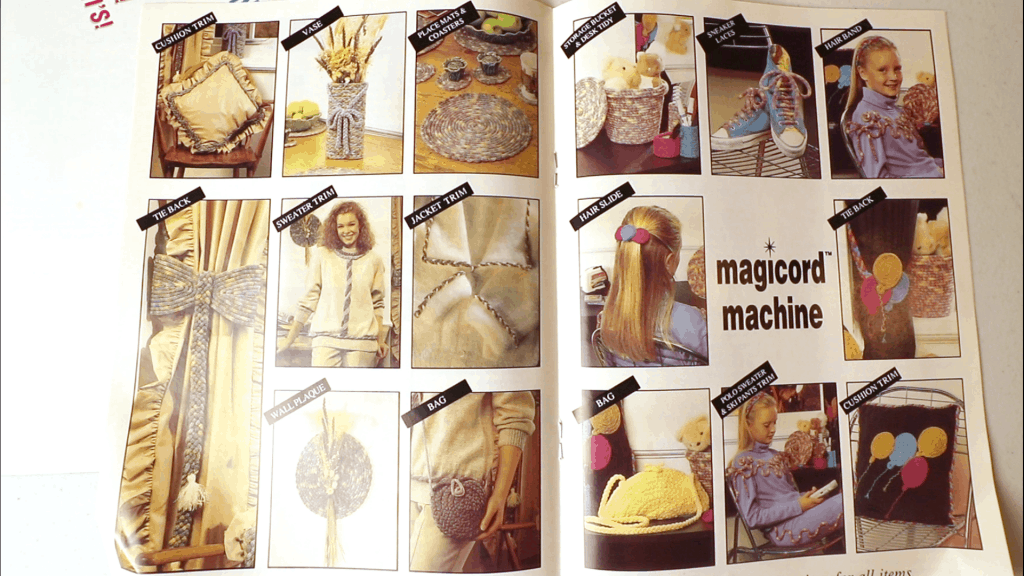
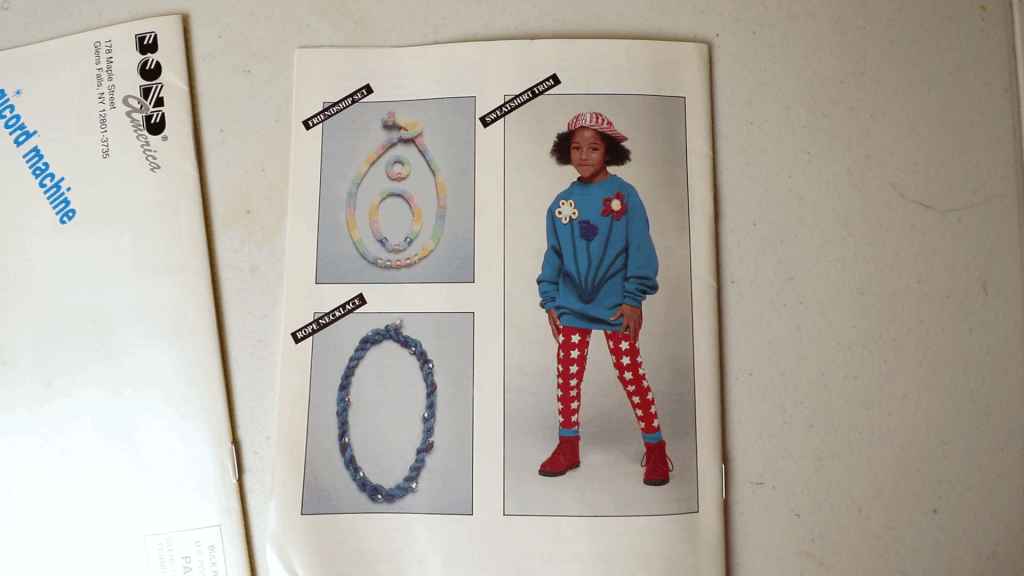
I use 3 strands of serger threads to make this I-cord.

Threading the yarn and cast on
To thread the yarn, simply go through the hole first.
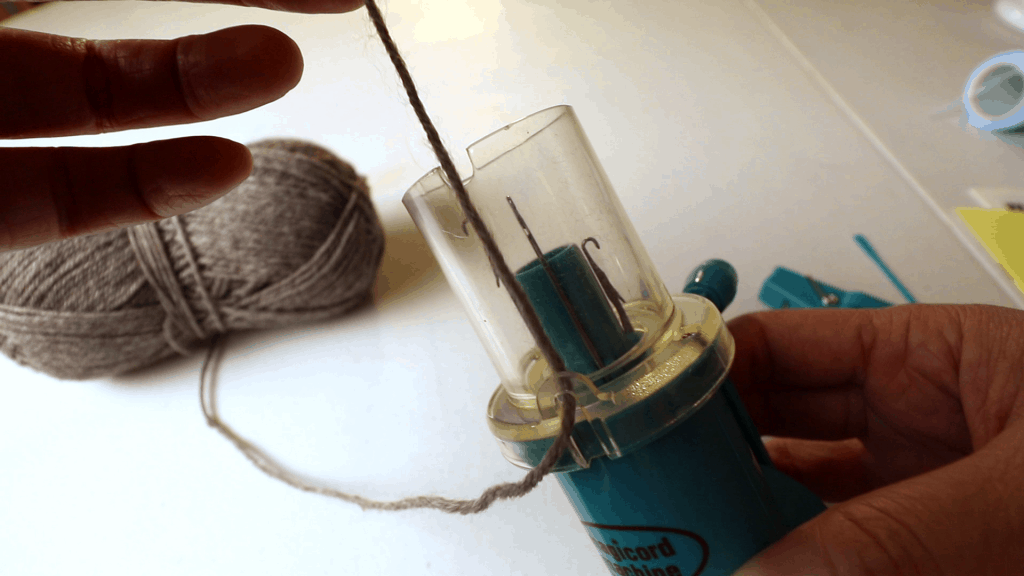
Go over the notch and thread through the hole in the center.
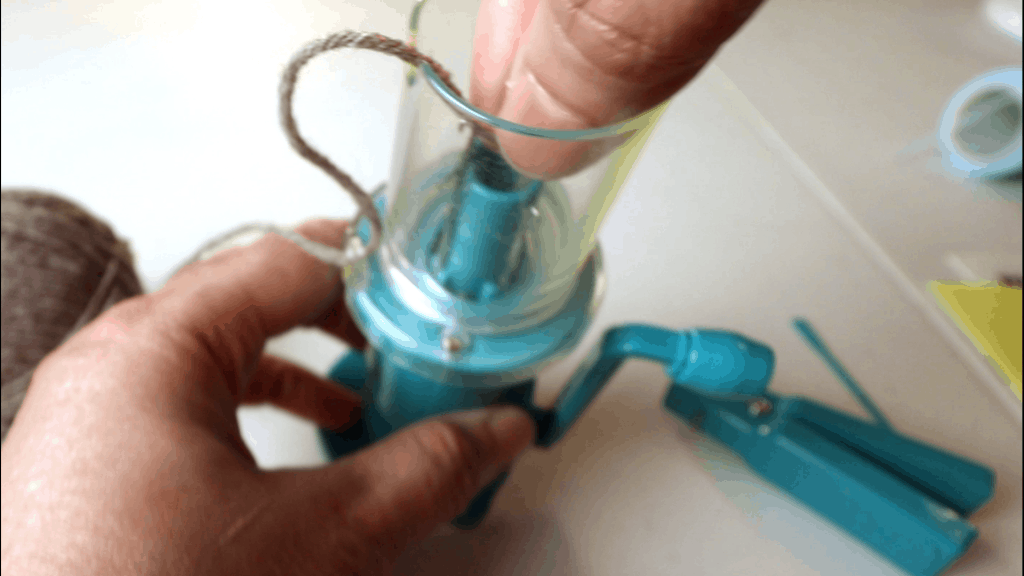
Add some weight from the bottom.

Start to crank slowly. Make sure all 4 hooks are open first. The yarn should go to the latch of the first needle.

We want to skip the second needle, so we move the yarn to the back of the needle.
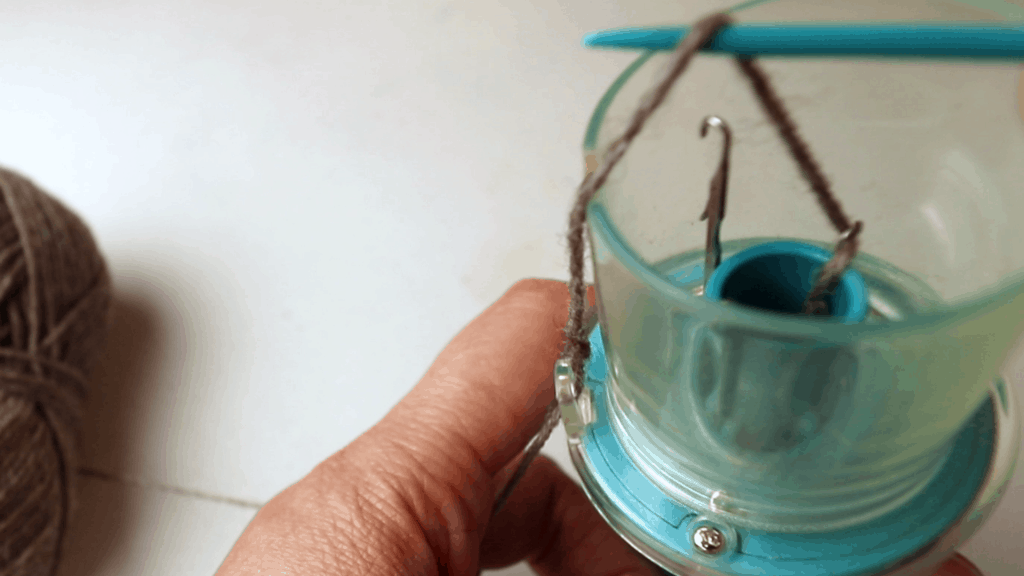
The third needle will knit (latch), and the fourth needle will skip by moving the yarn behind the needle.
So the first round to cast on is by knitting every other needle. In this case, it is the first and the third needle.


After the first round, we will knit every needle.
The new yarn will go to the latch, and the yarn from the previous round should be below the hook, if it is inside the hook, push down with a needle or tool. We only need to watch that for the first few rounds.
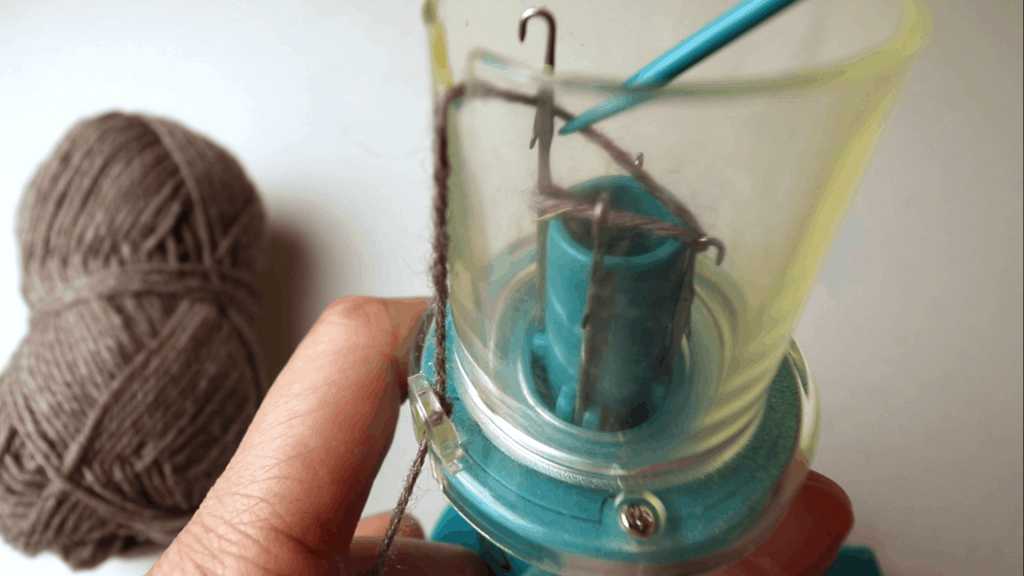
Keep cranking and you will see the I-cord forming in the center.

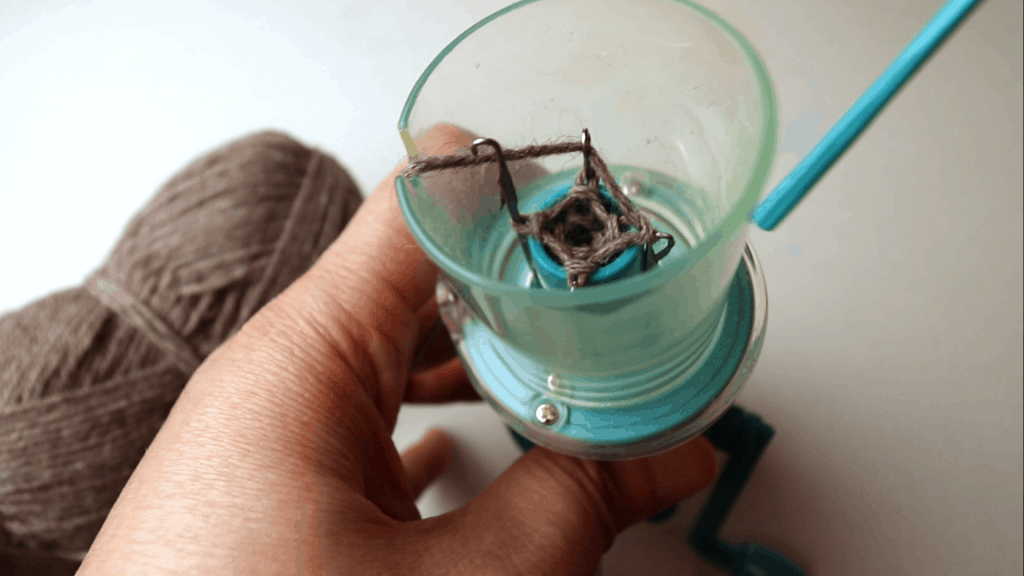
When it is long enough, it should come out from the bottom. Move the weight up when necessary.
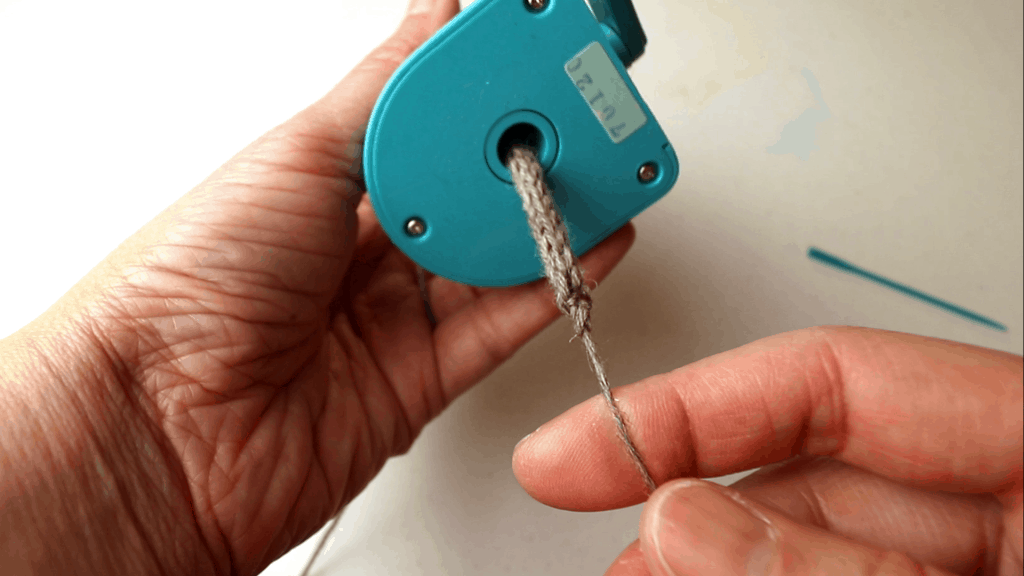
Cast off
When the I-cord is long enough, cut off the yarn and just keep cranking for 2 rounds. The knitting should come out from the bottom.
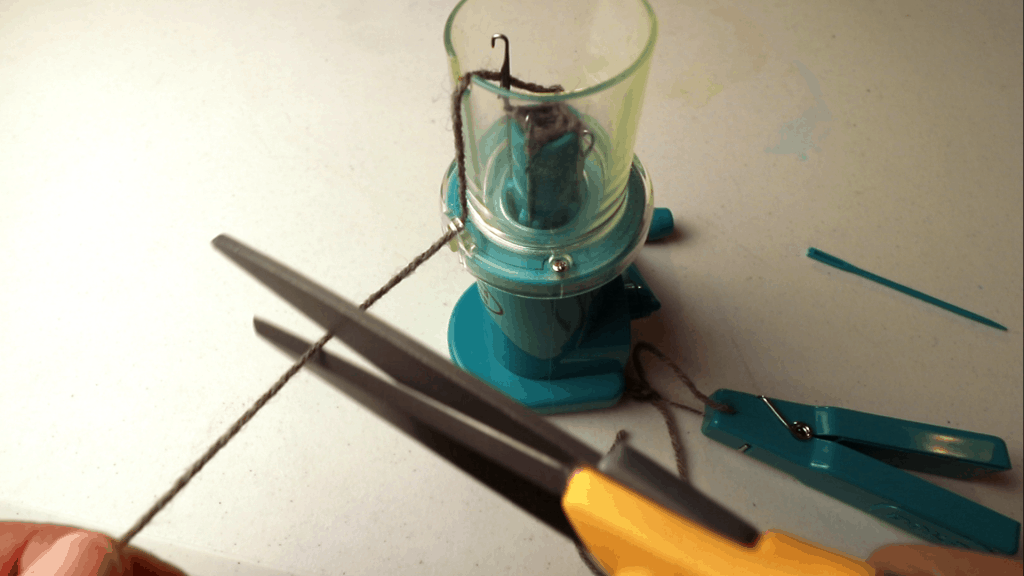
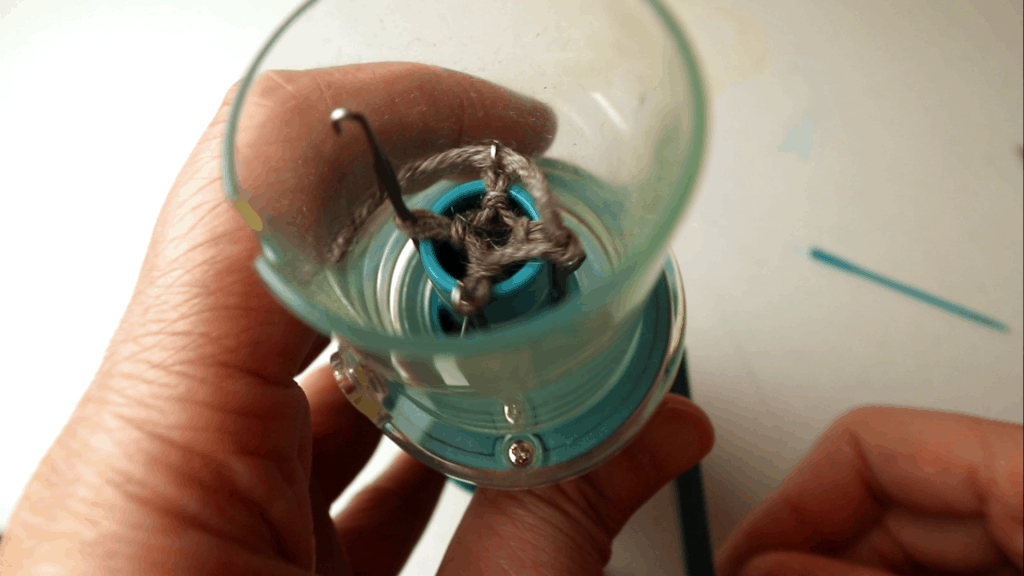
There will be 4 live stitches. Thread the yarn with a needle and go through all stitches to tighten up.

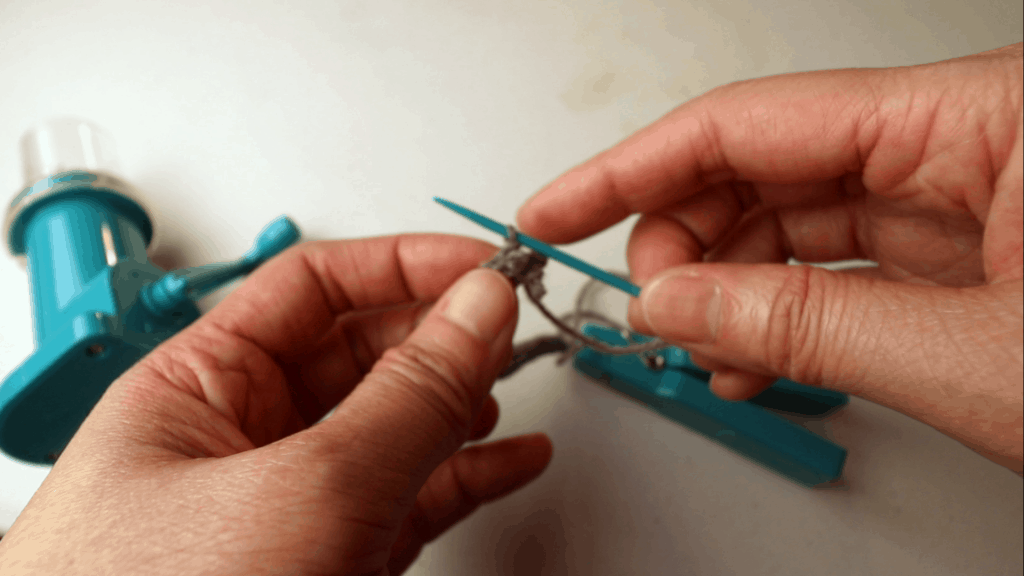
The I-cord is done. You can experiment with different yarns. Thinner yarns are easier to knit.
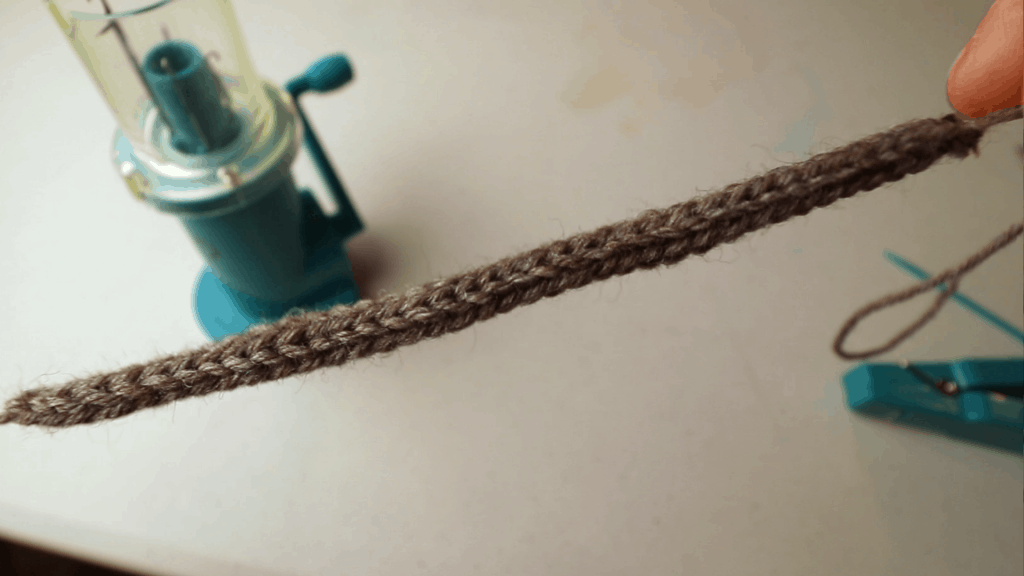
Circular knitting machine
Threading and cast on
The T is missing for the new Sentro machine. You can tell they are cheaply made.
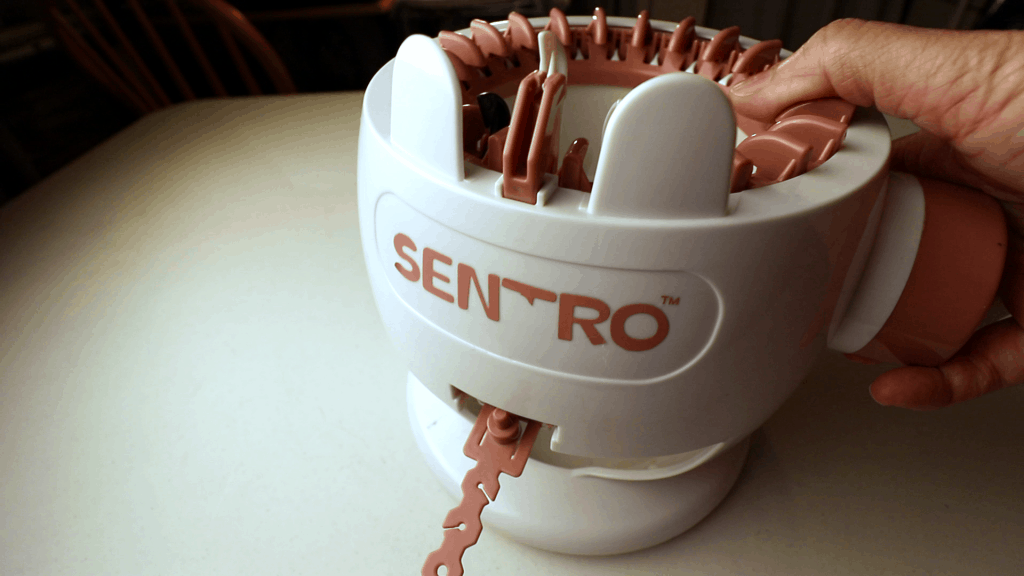
The 3 holes are supposed to make different tension for the knitting. I find it makes not much difference.
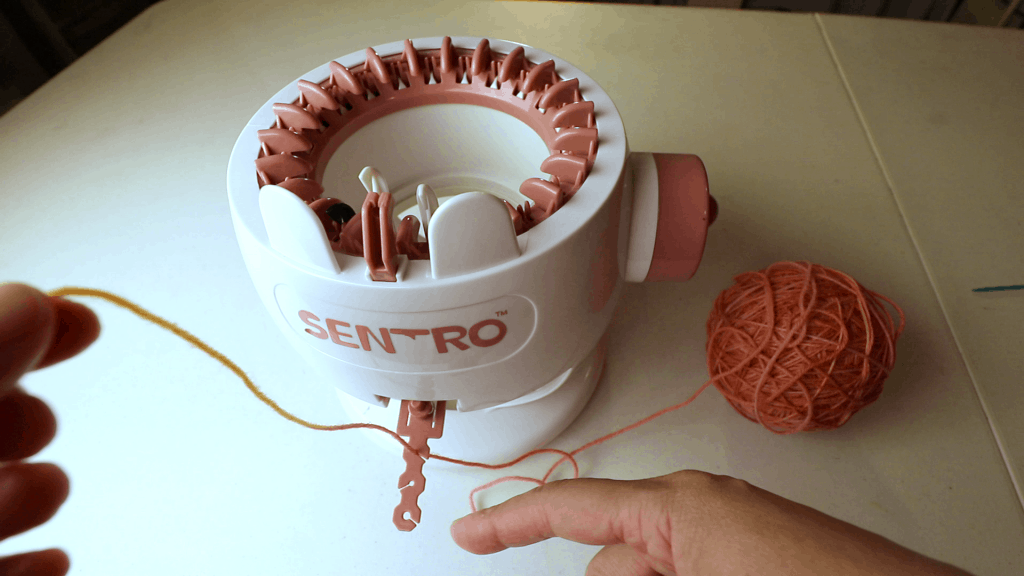
Thread through the tension disk and then the channel.

Notice the black needle out of all the white needles. This can mark the beginning of a circular round.
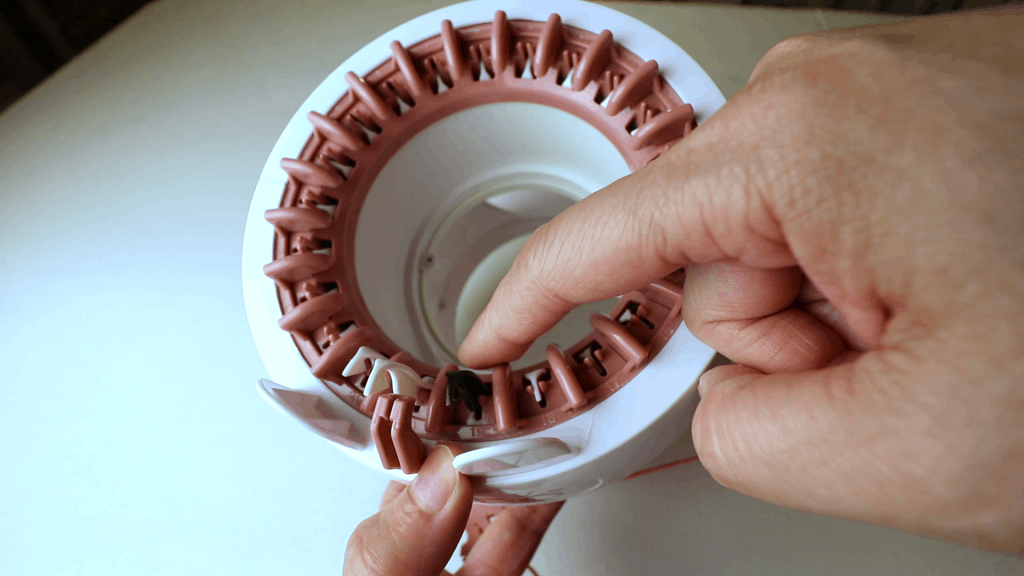
Place the yarn next to the black needle and drop the yarn to the center.
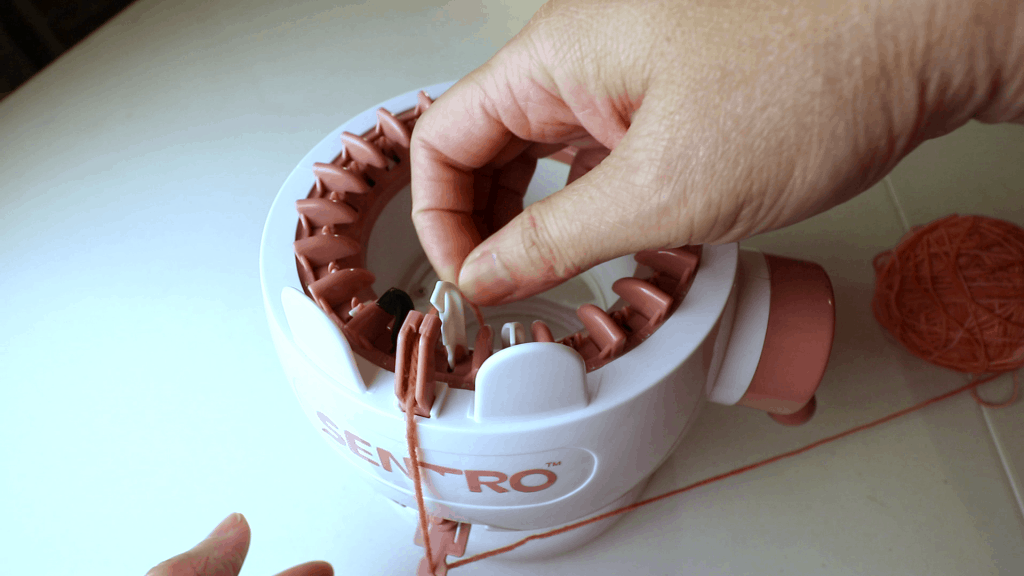
Add weight for better tension by adding a clip.

Start cranking the handle slowly. See the yarn go under the hook of the first needle.
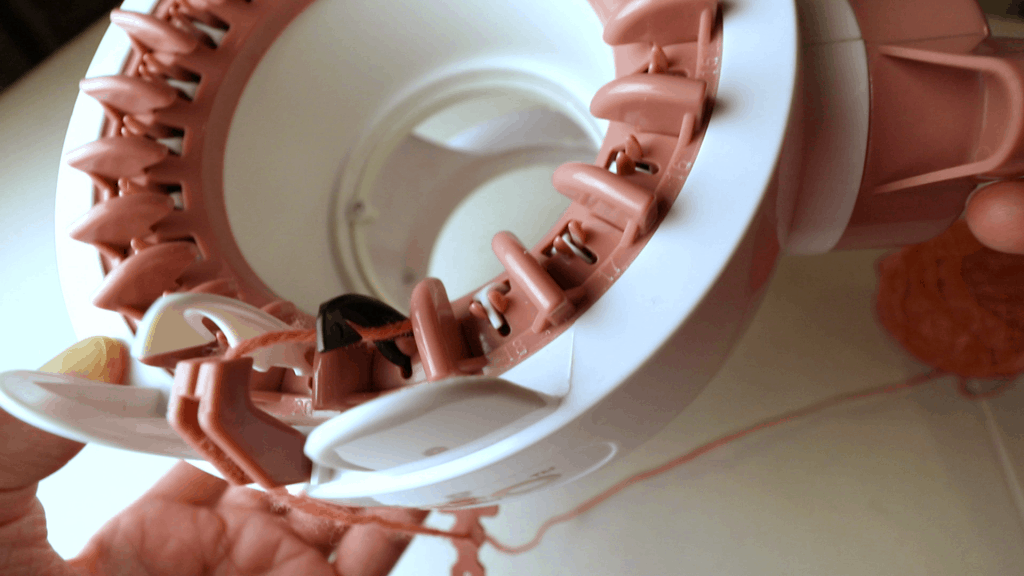
The cast on round will be the same as in the I-cord machine. We knit 1 needle and skip 1 needle. Alternate the knit and skip for the first round.
To skip the stitch, move the yarn to the back of the needle (to the center of the machine).
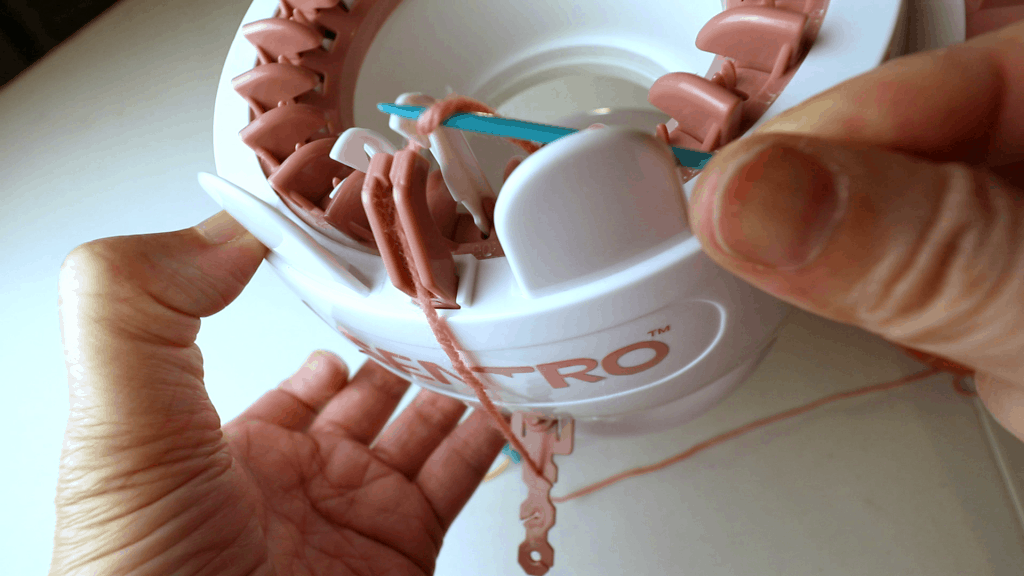
Move the yarn to the back of the needle.
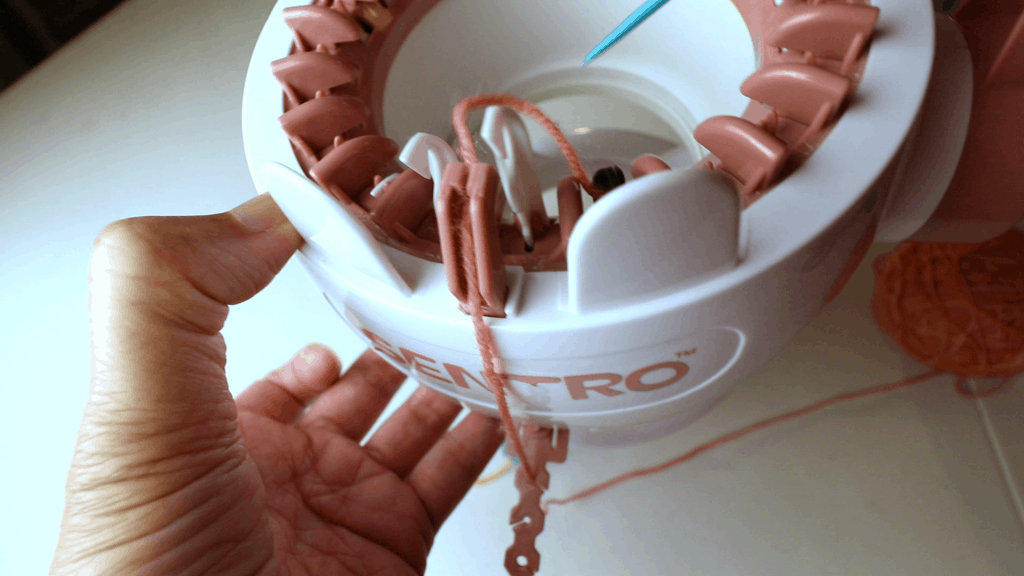
Knit the next stitch by cranking forward.

Skip the next needle. Repeat the knit 1, skip 1.
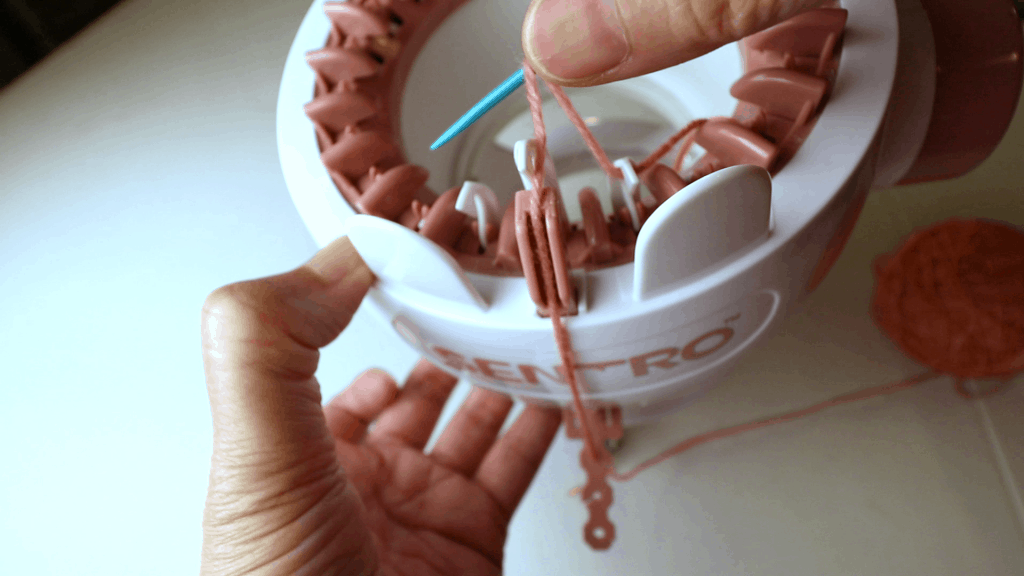
The end of the round. After the first round, just knit every stitch.
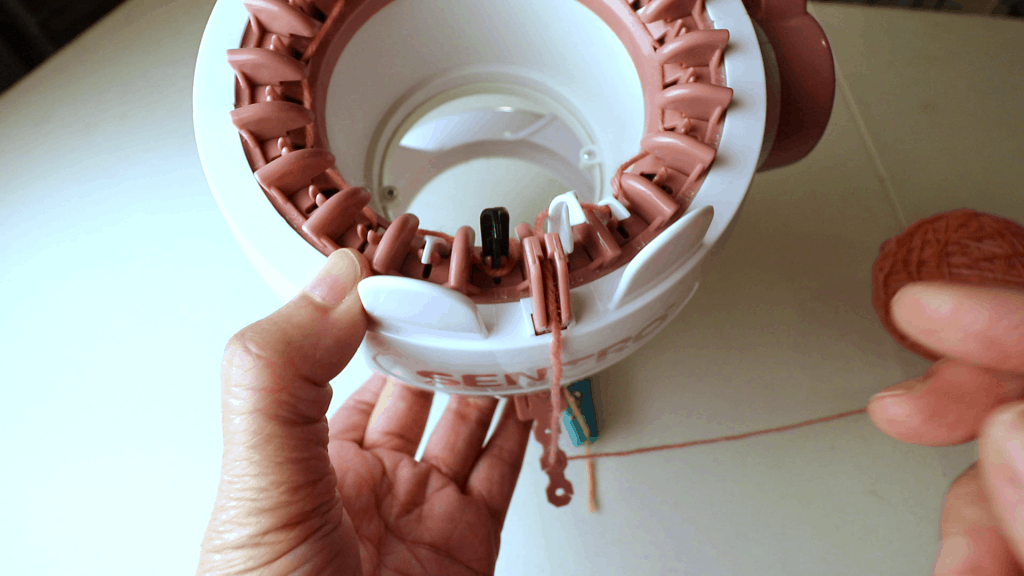
Starting to see the tube forming in the center.
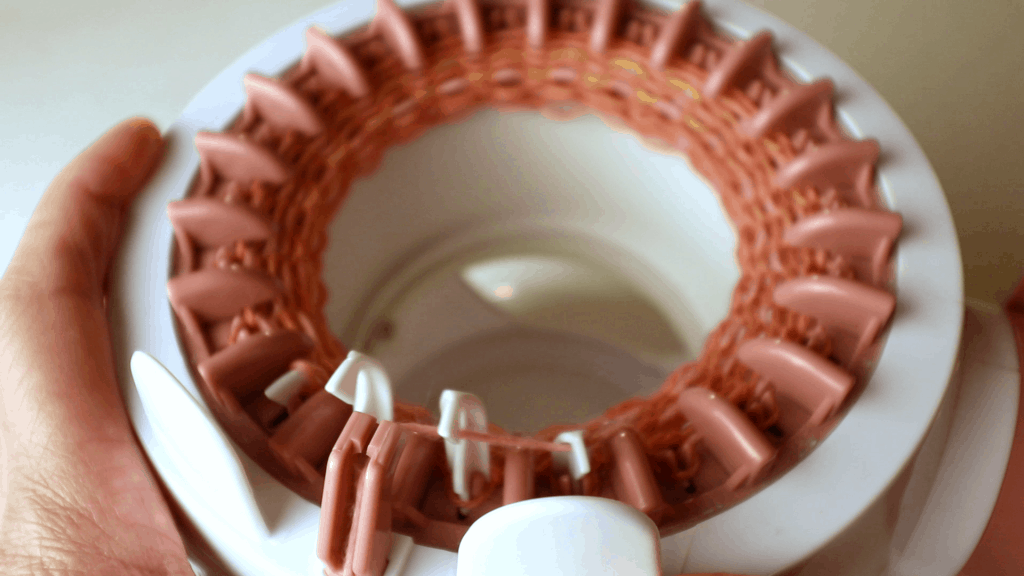
Clip on some weights for better tension.

When it is long enough, the tube will come out from the bottom.
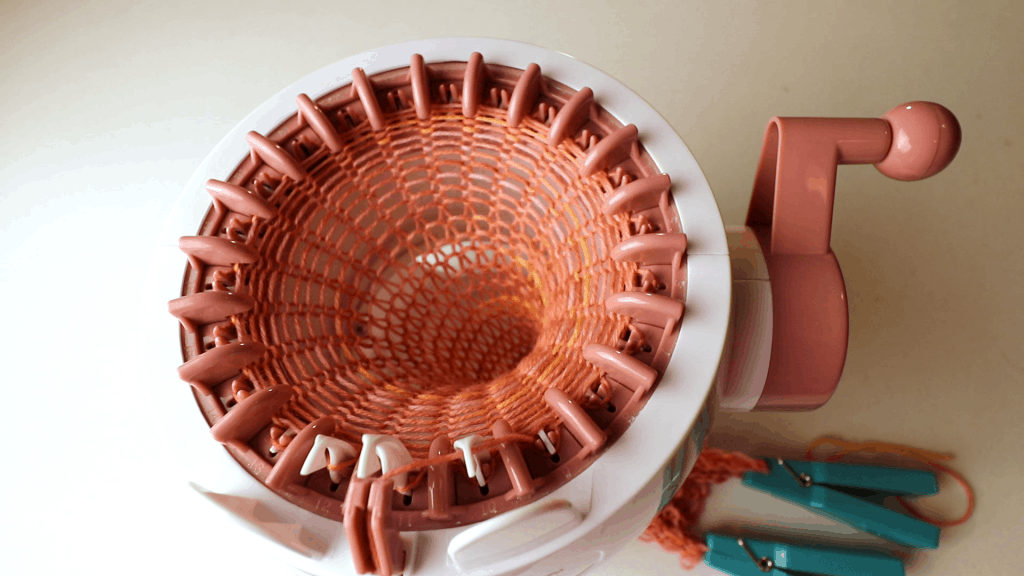
Cast off
There are many different ways to cast off. One easy way is to cut the yarn, thread through a needle, and pick up every stitch on the needle.
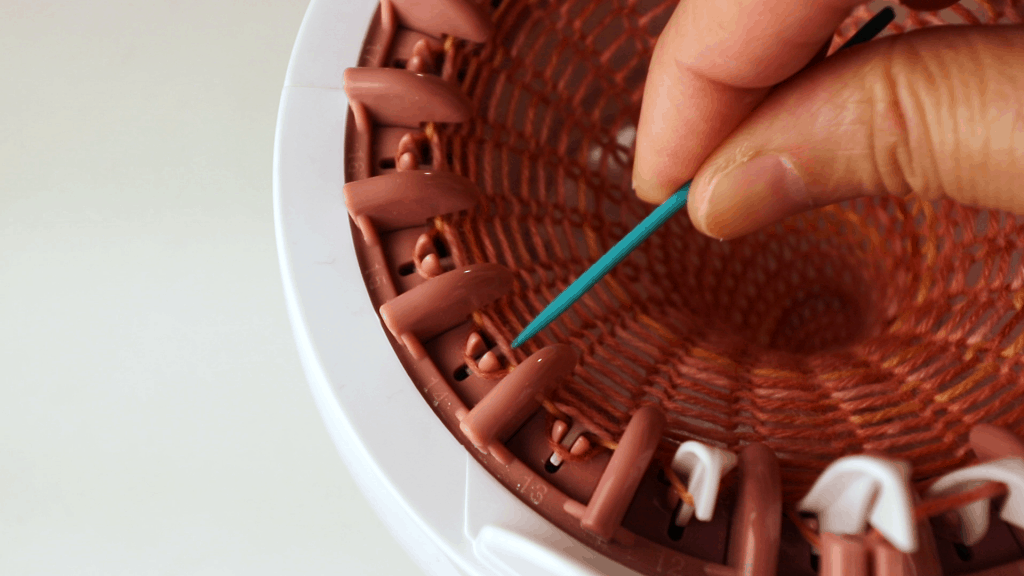
Another way is to use a waste yarn of a contrasting color.
Place the main color yarn in the center of the machine. You can cut it first or leave the whole ball in the center if it fits.
Thread the waste yarn and knit a few rounds.
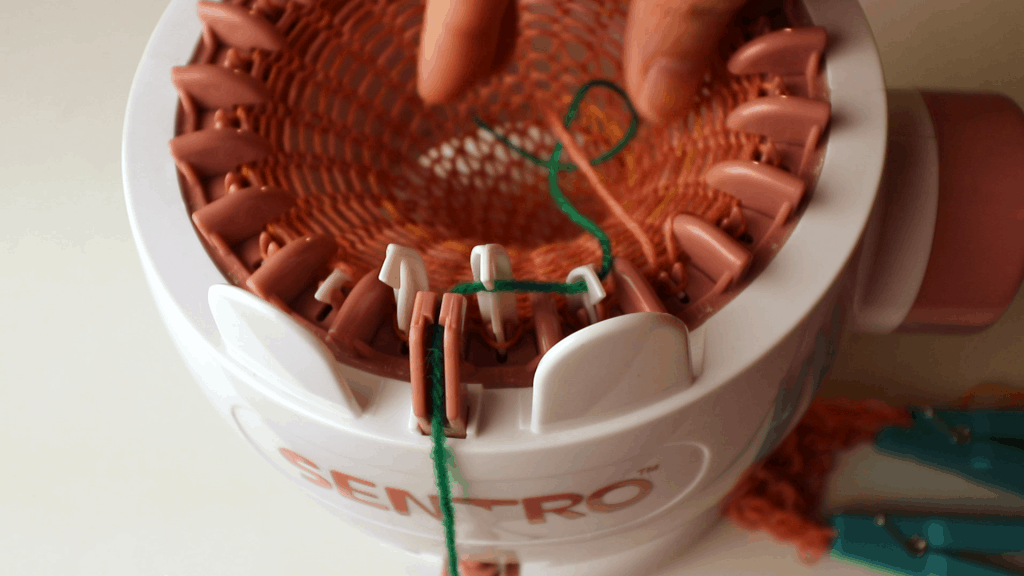
Both yarns are in the center.
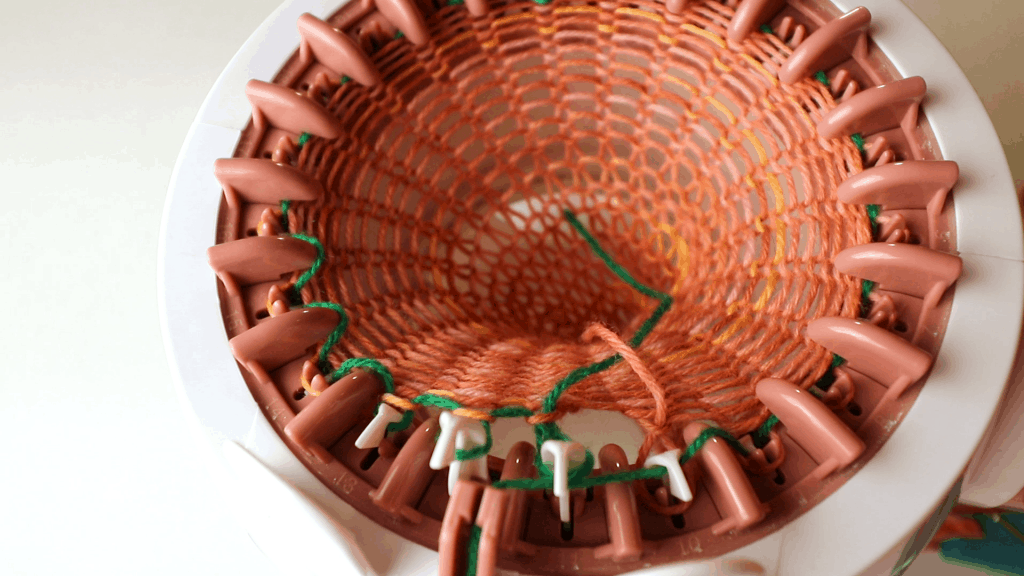
After a few rounds, cut off the yarn and leave the tail in the center.
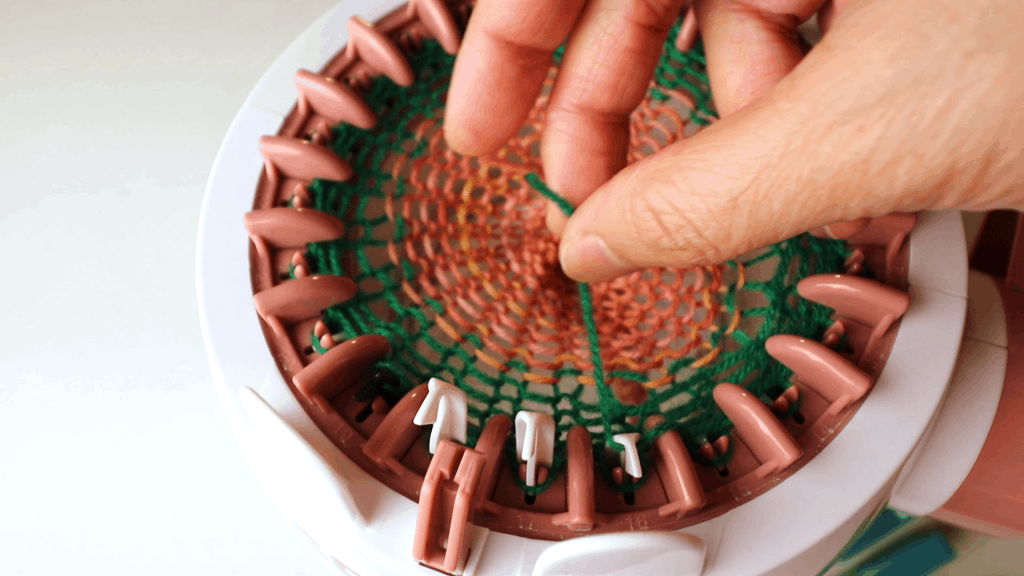
Keep cranking for 2 rounds and the knitting should fall out. Now you have live stitches on the waste yarn. You can pick up the live stitches to finish by hand knitting.
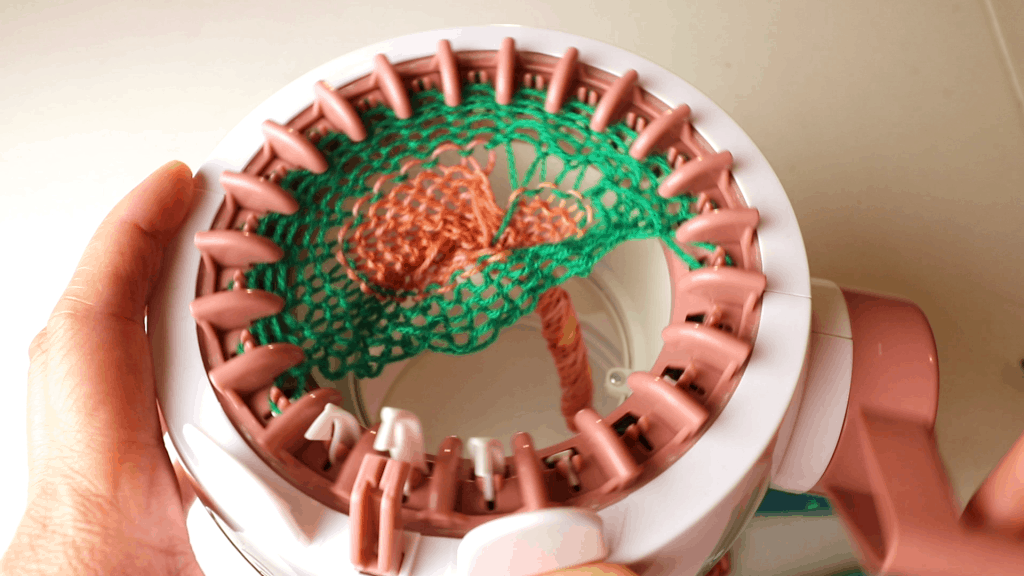
Finished sample.
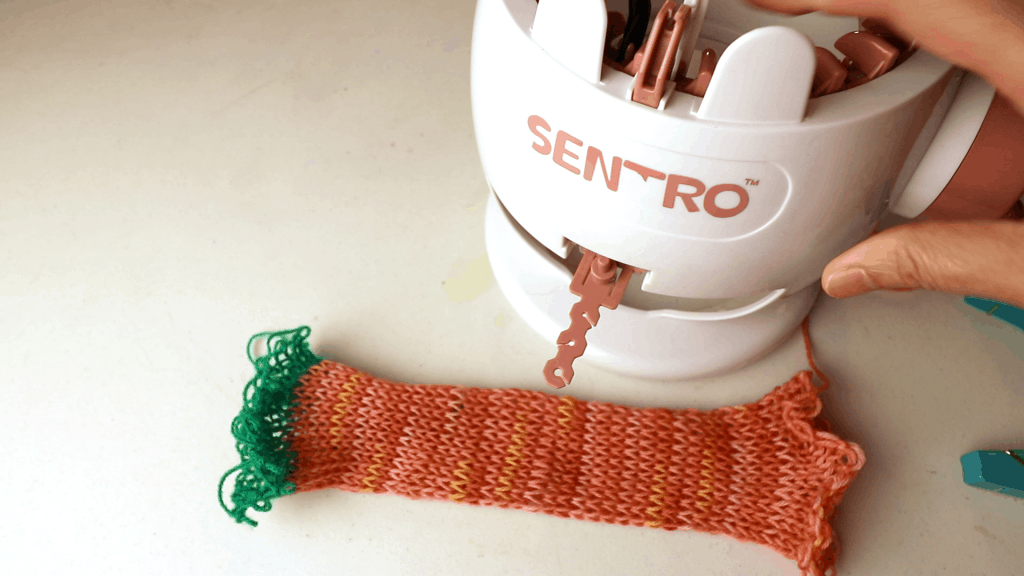
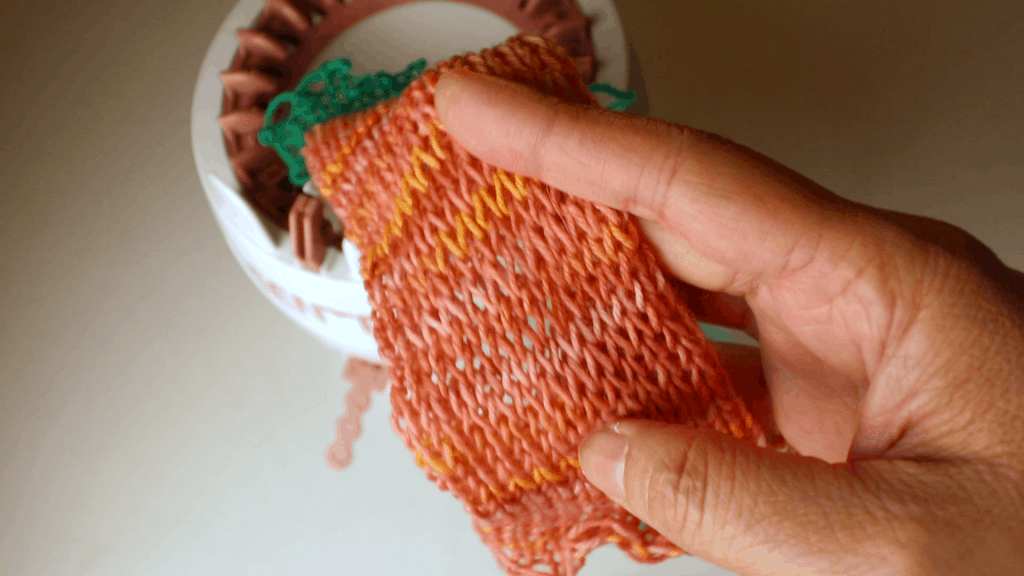
Panel (flat) knitting
There is a switch on the side for T (tubular) or P (panel) knitting. P is supposed to create a flat piece by knitting back and forth. I did not have good luck with the flat knitting. The machine rattles so much and I don’t want to risk breaking it. You can certainly try it.
Have fun knitting!
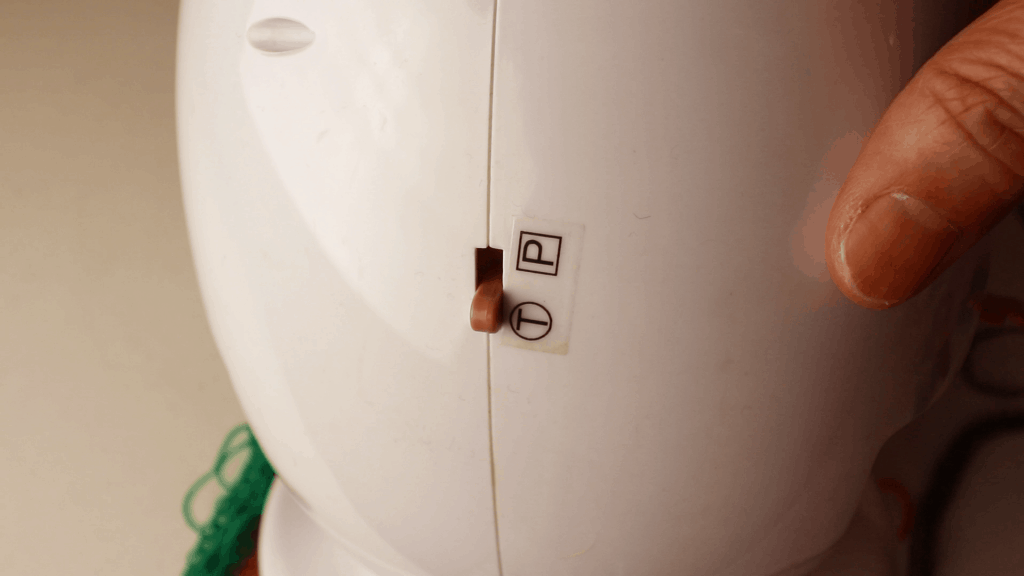
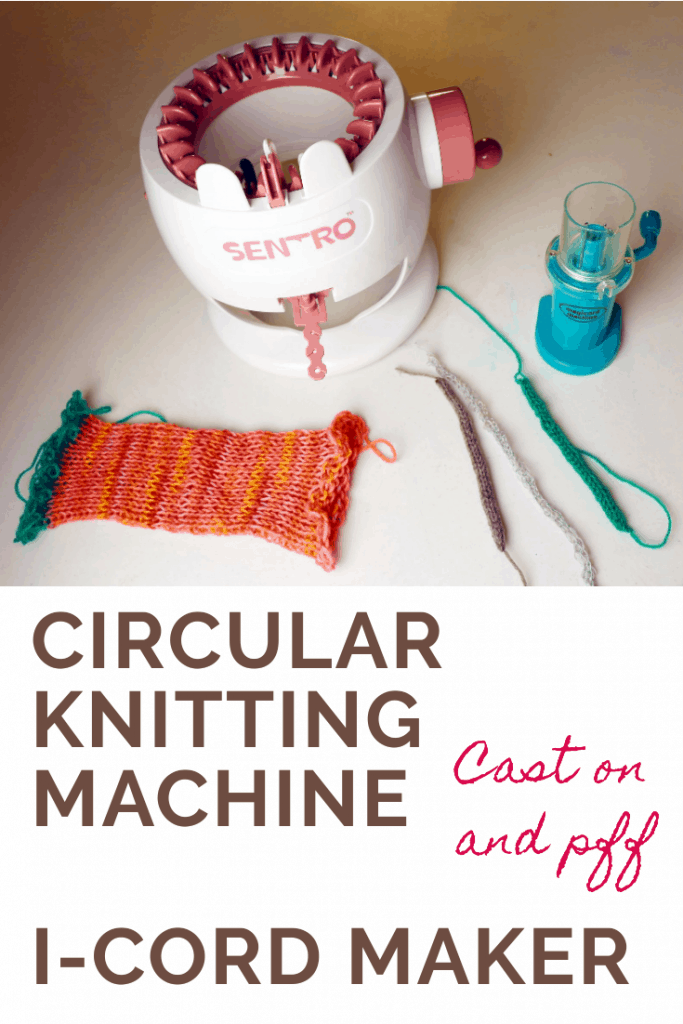
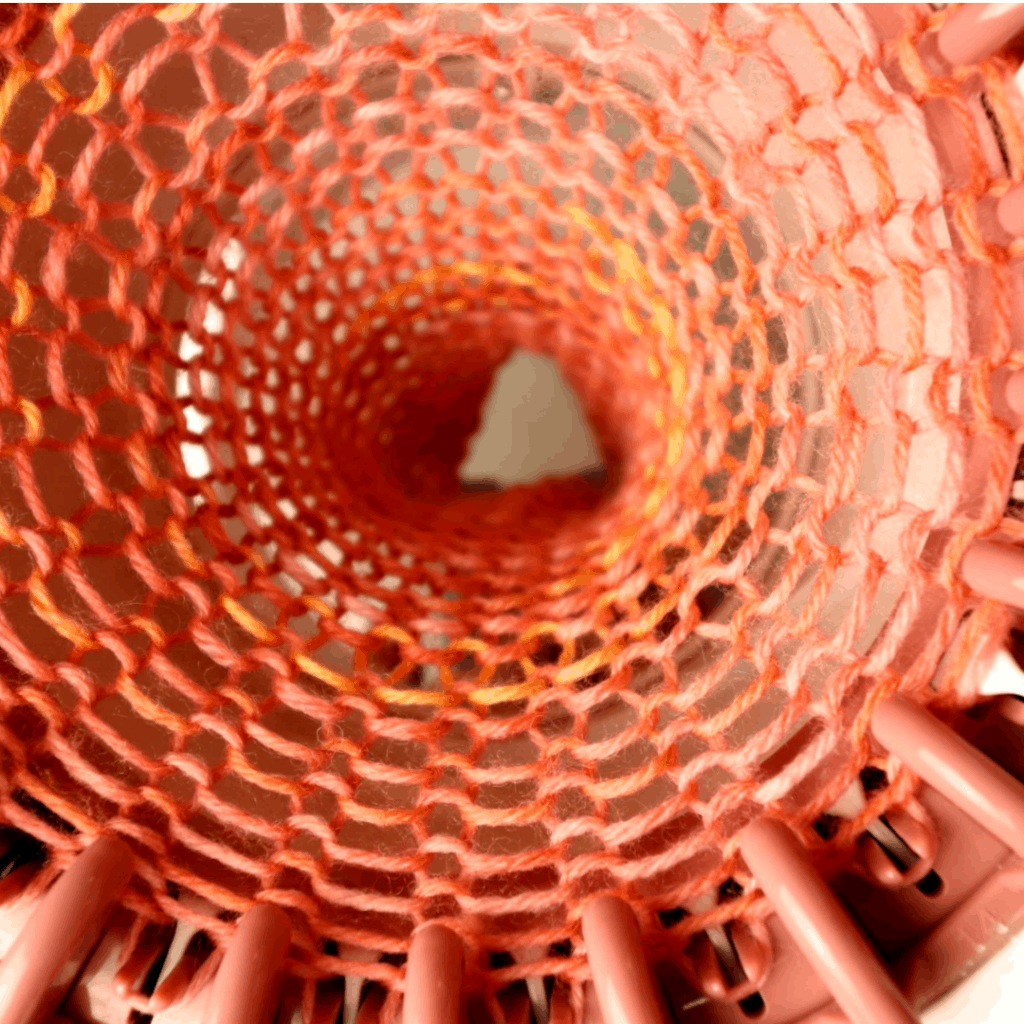



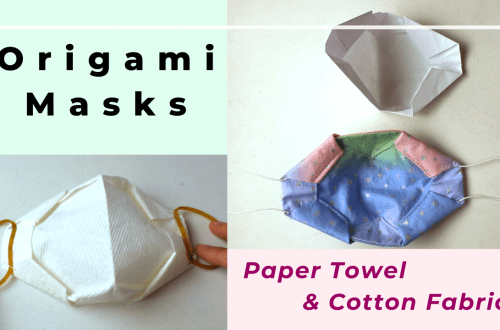
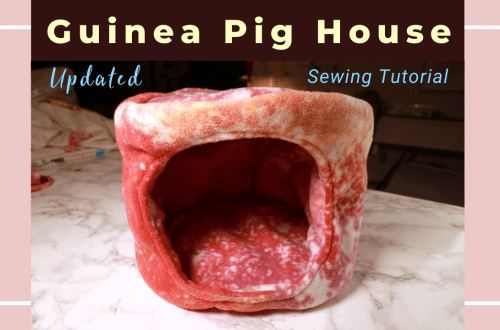
2 Comments
Jean eyer
This was so helpful! I have the 46 seroto and I was having trouble starting . I brought the small machine and I found you. I got started . You are great. Thank you very much. Keep up the good instructions🤗
Tien
I am glad it helps. It took me a while to make it work. The machine is a little flimsy but does work.